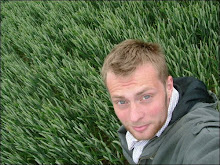For the first part of this interview with Alex Simmons, click here.
Comic creator Alex Simmons’ most recent work has been a two-part story for Archie Comics. In it, Barack Obama and Sarah Palin visit the high school at Riverdale, home to all-American teen Archie Andrews and his friends since the 1940s.
Alex has previously written numerous stories for Archie, including Archie’s World Tour and a series which reimagines the easygoing Jughead Jones as a hard-boiled private investigator, but writing two of the most recognised political figures in America today was a special challenge…
 |
| Alex Simmons reimagines Jughead Jones as a 'semi-private investigator' |
 |
| Barack Obama and Sarah Palin visit Riverdale in Archie Comics issues 616-617, written by Alex Simmons |
Alex explains how the media came to be at the heart of this high-profile political story:
‘This comes back to the idea about balance which shaped my Blackjack story about the Touaregs: one man’s insurgent is another man’s freedom fighter! I felt I couldn’t weigh in on specific issues which divide the parties. But politicians are politicians – they have to do certain things to get where they are – and it’s important that we hold them to account. So the message behind my story is one of responsibility for your actions in the public arena.’
Archie and Reggie eventually repent and redeem themselves by taking responsibility for the media spin done in their name by Trula and Veronica. For this plot twist, Alex drew inspiration from Republican presidential nominee John McCain’s personally gracious defeat speech on the day of President Obama’s victory, in which he stepped back from what had been an aggressive campaign and chided those among his supporters who booed Obama’s victory.
‘In the Archie story, I wanted to show what should happen – politicians being true leaders and taking responsibility for things done in their name. Comic books are fun, but especially when they’re aimed at children, a positive message never hurts.’
Next time on Books and Adventures, we look at Alex’s greatest contribution to comics for children, the international Kids Comic Con convention.






